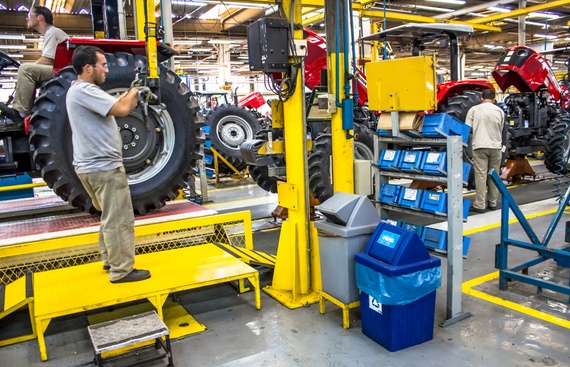The Changing Dynamics Of Mechanical Engineering Education In 2023, As Automation And Robotics Combine

2023 is projected to be a changing session for mechanical engineering as the branch of engineering will be taking a new turn with the addition of automation and robotics combination.
The mechanical engineering field evolved by becoming more established with its value of instilling the characteristics of the creator, manager, and equipment maintainer in an engineer in the first two industrial revolutions. Mechanical engineering is a core field of knowledge that encircles the industries of manufacturing, materials, mechanics, thermodynamics, fluid mechanics, and machine design. Mechanical engineering is the frontrunner and receiver of every engineering form. Mechanical engineers will be keeping the industry enriched by its exclusive design, construction, and operation. It is an increasing horizon field of engineering with advanced gear for enhanced complexity, flexibility, connectedness, and automation.
When compared to previous industrial revolutions, the fourth industrial revolution is at present significant in creating an increase in the multidisciplinary nature of the knowledge store of a student. The revolutions included core technologies of AI and ML, IoT, Robots and Cobots, Big Data, 5G, Augmented and Virtual Reality, 3D and 4D printing, and others. A major part of the boring yet risky and unclean activities are completed by machines. The machines assist in production and service level increase and thereby simplify or change the working role of an employee.
The employees in turn develop new experiences, surroundings, enterprises, and even societal structures that help in the growth and cultural advancement of the business sectors. Machines are becoming more and more indispensable part of human civilization. Without various tools and equipment pieces, it is impossible to construct monumental buildings, textiles, and handicrafts that might not be feasible. According to experts, one of the sixty-four acknowledged art forms in prehistoric India was getting the know-how of tools and machines. China was indispensable as the world leader in manufacturing machines up to the fourteenth century.
Evolution of Mechanical Engineering
From the days of prehistoric times, machines are equipped with automation systems and the first-self-operating devices were many of the traps that were used to catch games. An example of early autonomous devices is the Chinese chariots pointing south, the Persian windmill, and the Egyptian water clock. In Alexandria, active teaching and research projects are focused on automatic devices from the third-century BC. Hero’s “Pneumatics”, which are various inventive design descriptions, is renowned to be the source for the creation of automated machines.
In the Middle Age, the Arab world produced several treatises on machine design while building on this basis. The Chinese and Japanese created some fascinating self-operable devices more than a thousand years ago for entertainment purposes. The machines were developed to automatically operate as per the sequence of actions.
During the fifteenth century, the machine age began in Italy and it expanded throughout the European countries. The technology press made several publications on machine design available almost throughout the European market. The hydraulics evolution was fascinating and numerous inventive residential appliances including fountains and fanning mechanisms, commercial appliances, saws, wineries, fabric washing, and wheat mills were also constructed. Steam energy, machine tool industry, and mechanized industries defined the first industrial revolution that started in the United Kingdom in the eighteenth century.
In specific, weaving patterns and images were introduced for utilization in the punched cards technology. The internal combustion engine, electricity, gas, communication technologies, control systems, and factories with assemble lines driven by electricity were all part of the second industrial revolution that took place in the next century. Innovative mechanisms with a plethora of energy sources and electromechanical devices for automation and industrial process control were utilized for the creation of several new machines with increased capacity and power.
The subjects of microelectronics, digital computers, and automation based on programmable controllers were the third industrial revolution catalyst. Mechatronic systems have started to develop from machine systems and the systems are improved in sophistication, efficiency, size, and weight, with quicker control mechanisms, more dependable and adaptable. Fusion among the physical, cyber, and biological worlds, and intelligent automation, are definitions of the current fourth industrial revolution.
Conclusion
With the inclusion of the subjects such as automation and robotics, labor cost reduces, with advantages of designs improvement, simpler capacity expansion, inventory decrease, consistency in quality, downtime improvement, decreased setup time and transition costs, improved preventive maintenance, extended equipment life, safety increase, easy failure detection and rectification, flexible products, lower energy consumption. Automation engineers are employing a variety of technologies for optimizing, simplifying, and automation manufacturing, mining, power generation, warehousing, and related engineering processes. Robotics and industrial automation are anticipated for embracing by more than 60 percent of businesses as per the World Economic Forum’s 2020 study on the Future of Jobs. An estimate by Maximize Industry Research suggests the automated process control market would likely reach or surpass 27 billion USD by 2027. As per a Global Survey from 2021, automation is being tested by organizations in 70 percent of the world’s respondents’ countries and it is estimated that $37 trillion will be produced by smart manufacturing by 2025. Moreover, Global Warehouse Automation Market is expected to reach more than 64 billion USD by 2030, according to research from 2022 Acumen Research and Consulting.
Robots help in the achievement of greater accuracy and quality work as well as aid or replace human operators in risky, unpleasant, and boring work. Market Research Future from 2022 projects that the entire robotics market will surpass 214 billion USD by 2030 as a result of the availability of affordable and energy-efficient robots and help the fields of construction, agriculture, defense, healthcare, infrastructure, retail, leisure and entertainment, and law enforcement with robotics and mechatronics.
The inclusion of automation and robotics in engineering courses ensures upcoming engineers become successful in adapting to every modern-day work situation.
Read More News :
TrackEx' Streamlining ITES Industry with state of the art technology
